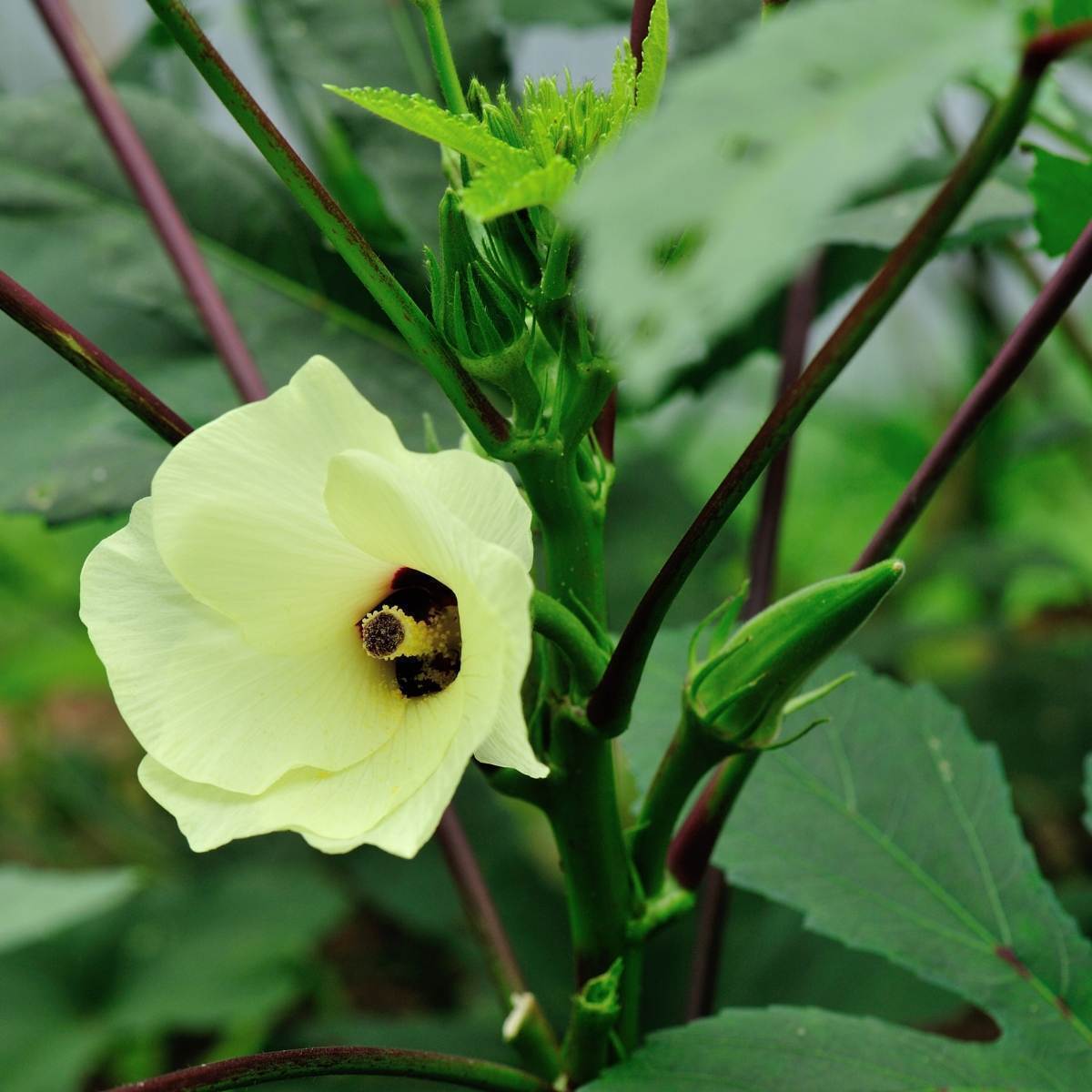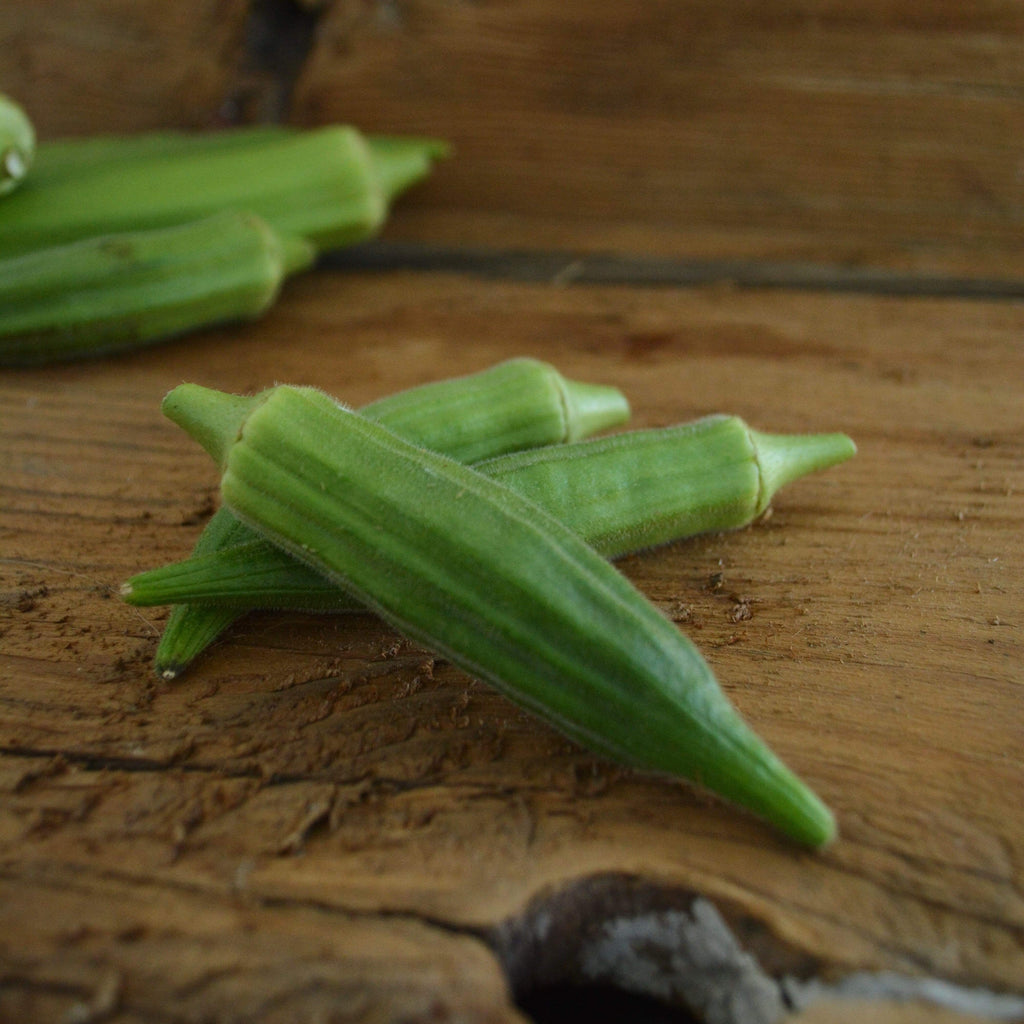

Avoid disturbing the soil around the plants when weeding.Weeds compete with plants for water, space, and nutrients, so control them by either cultivating often or use a mulch to prevent their seeds from germinating.Keep weeds under control during the growing season.Pick them daily to keep the plants in production. The pods become tough as they increase in size, so harvest them when they are 3 inches long or less. Narrow, ribbed, edible pods with pointed ends follow the flowers. This exotic, tropical-looking, plant grows 3-6 feet tall and produces 2-3 inch, pale yellow with a maroon center, Hibiscus-like flowers. Additional Care: Okra is very tolerant of clay soils and heat.Temperature: Grows best when temperatures remain above 50°c.Soil: Fertilize prior to planting, and again when plants are 12 inches tall, and finally when the plants begin to flower.Transplanting: Transplant when there are at least two sets of true leaves.Whole, fresh okra pods also make excellent pickles. Okra can be frozen, pickled, and canned can be served raw, marinated in salads or cooked on its own, and goes well with tomatoes, onions, corn, peppers, and eggplant. It has an unusually high gum content, which makes it popular as a thickener in stews/soups. Click here to learn more.The Clemson Spineless Okra variety (also known as Lady’s finger), is one of the most popular okra on the market. To prevent this, follow the simple cooking methods above. Folate is important for preventing neural tube defects. Eating okra may help pregnant women meet their daily folate needs. Yet, some research suggests that it may interfere with common diabetes medications. Okra contains a protein called lectin, which is being studied for its role in cancer prevention and treatment. It’s also rich in polyphenols, which fight harmful inflammation and protect your heart. Animal research suggests that okra may bind to cholesterol in your gut and lower blood cholesterol levels. This fruit is unique, as it provides protein, a nutrient that many other fruits and vegetables lack. Okra is rich in many nutrients and particularly high in vitamins C and K. Click here to get this tasty recipe Clemson Spineless Okra Nutrition Facts Chopped tomato makes a great addition when we have some handy. This is so simple and easy and the okra tends to not be nearly as gummy or slimy when roasted. Stewed okra is great, but for a little variety, we like to roast ours from time to time. Heirloom Clemson Spineless Okra RecipesĪs a good Southern gardener, I find myself bringing in okra by the armload nearly every other day. If properly harvested, handled, not washed, and stored correctly, one can expect to keep good quality pods in the refrigerator for about seven days. The optimum conditions for storing fresh okra are a moist environment and temperatures of 45 to 50 ☏. Preserving And Storing Clemson Spineless Okra Plant The crop can be grown on all soil types, although sandy loam soils high in organic matter are the most desirable. If soil temperatures are less than 65 ☏, at a soil depth of 4 inches, gardeners should hold off on planting until soil temperatures are warmer. The optimum soil temperature for seed germination lies somewhere between 70 to 95 ☏, so gardeners will want to check the soil temperature at a depth of 4 inches before planting. When planting okra, gardeners want to ensure that the soil temperature is warm enough so that seeds germinate and begin to grow, as cool soils can lead to slow growth and seedling diseases. Okra grows best at temperatures between 75 and 90 ☏. The plant was introduced to the Americas by ships plying the Atlantic slave trade by 1658, when its presence was recorded in Brazil. From Arabia, the plant spread around the shores of the Mediterranean Sea and eastward. One of the earliest accounts is by a Spanish Moor who visited Egypt in 1216 and described the plant under cultivation by the locals who ate the tender, young pods with meal. The plant may have entered southwest Asia across the Red Sea or the Bab-el-Mandeb straight to the Arabian Peninsula, rather than north across the Sahara, or from India. The Egyptians and Moors of the 12th and 13th centuries used the Arabic word for the plant. The geographical origin of okra is disputed, with supporters of South Asian, Ethiopian and West African origins.


tuberculatus and a reported “diploid” form of okra. However, proposed parents include Abelmoschus ficulneus, A. Clemson Spineless Okra is an allopolyploid of uncertain parentage.


 0 kommentar(er)
0 kommentar(er)
